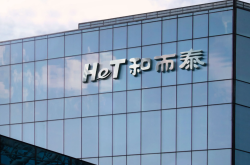AI XIN TIAN XIA | Analysis | [AI+] Becomes a National Strategy: Exploring AI+ Opportunities from a Development Perspective
![]() 11/24 2025
11/24 2025
![]() 561
561
Foreword
In August 2025, the State Council officially unveiled the Opinions on Deeply Implementing the [AI+] Initiative, a landmark document hailed by the industry as the "Blueprint for the AI Era." This milestone signifies China's AI development transitioning from a phase of technological R&D to a new era of deep integration with the economy and society.
From the launch of the ["Internet+"] initiative in 2015, which opened the chapter of the digital economy, to the ["AI+"] initiative in 2025 reshaping the productivity landscape, a decade of transformation has witnessed a profound technological revolution sweeping across industries.
Author | Fang Wensan Image Source | Network
A Qualitative Leap: From [Connection] to [Intelligence]
If the core of ["Internet+"] lies in breaking information barriers and achieving efficient connections, then the essence of ["AI+"] represents a leap in cognitive efficiency. It drives the cost of complex cognitive tasks—such as recognition, generation, and decision-making—toward zero, fundamentally reshaping production methods and lifestyles.
The transition from ["Internet+"] to ["AI+"] reflects the deepening evolution of information technology, moving from enhancing connection efficiency to achieving cognitive capability leaps. Over the past decade, the internet has completed the infrastructure setup for ["connecting everything"], accumulating massive data resources. Now, AI leverages these foundations to achieve a qualitative leap from ["informatization"] to ["intellectualization"].
Factories are shifting from automated production to autonomous optimization, hospitals from experience-based diagnosis to data-driven approaches, and education from batch training to personalized learning. The entire society is forming a new paradigm of human-machine collaboration and cross-sector integration.
Behind this qualitative leap lies the dual drive of technological maturity and strategic demand:
① Continuous breakthroughs in technologies such as generative AI and multimodal large models, sharp declines in training costs, and increasingly mature toolchains have enabled AI for large-scale deployment.
② China's economy stands at a critical juncture of transformation and upgrading, with total factor productivity urgently needing new drivers. AI serves as the core engine driving the formation of new quality productivity.
Currently, AI is at a critical window for application deployment, representing both a golden period for technological inclusivity and a strategic opportunity that must not be missed.
The [Three-Step] Strategy Toward an Intelligent Future
The Opinions clearly outline a [three-step] strategic goal, establishing a clear development path:
● By 2027: China will lead in achieving broad and deep integration of AI with six key sectors, with the penetration rate of next-generation smart terminals and intelligent agents exceeding 70%. The core of this phase is pilot popularization, solidifying foundational capabilities and addressing development gaps through deep penetration in technology, industry, and consumption. AI will transition from a novel tool to a common facility. The 70% penetration target means smart terminals will become as ubiquitous as smartphones today, fully integrated into production and daily life.
● By 2030: AI will comprehensively empower high-quality development, with the penetration rate of next-generation smart terminals and intelligent agents exceeding 90%. The smart economy will become a key growth driver for China's economic development. This phase will see the establishment of standards, with AI becoming the fourth infrastructure alongside water, electricity, and networks, forming differentiated advantages in global AI competition. Coinciding with a critical juncture where China's GDP is poised to surpass that of the United States, AI will inject strong momentum into economic growth. By 2030, AI is projected to contribute approximately $15.7 trillion to global GDP.
● By 2035: China will fully enter a new stage of smart economic and social development, providing strong support for achieving socialist modernization. This phase will achieve full penetration, with AI transcending the economic sphere to profoundly reshape social governance, legal ethics, social interactions, and even human thinking patterns, becoming the core engine driving national modernization. This timeline aligns closely with China's strategic goal of achieving socialist modernization, underscoring AI's central role in national development.
These three phases build upon each other, essentially constructing a conversion mechanism from technological capability to industrial strength. Through clear milestone-based goals, they not only hedge against the shock risks of deglobalization but also gradually translate technological advantages into industrial influence.
Dual Tracks: From Transformation and Upgrading to Native Innovation
The impact of ["AI+"] on industries extends far beyond efficiency gains, driving a comprehensive restructuring of production factors, organizational structures, and business models. Opportunities primarily manifest in two directions: transforming traditional industries and nurturing emerging sectors, forming a dual-wheel-driven development pattern.
The core of intelligent transformation in traditional industries is leveraging AI to integrate production, distribution, and service processes, achieving all-factor efficiency improvements. This is currently the most certain area of opportunity. In the industrial sector, AI has penetrated the entire workflow, from intelligent simulation optimization in design to adaptive process adjustments in production and predictive maintenance in services. Advancing industrial software innovation and smart manufacturing equipment development means vast market opportunities for industrial AI solution providers, smart equipment manufacturers, and industrial data service providers.
AI-native enterprises have emerged as the core carriers. These companies do not merely use AI as an auxiliary tool but integrate it into every aspect of strategic planning, organizational structure, and business processes, exploring entirely new business models.
AI+ Reconstructing Industrial Value Networks
The key actions outlined in the Opinions for ["AI+"] are not a simple superposition of isolated domains but form a complete closed loop of [technological breakthroughs - industrial upgrading - consumption enhancement - people's wellbeing improvement - governance optimization - global cooperation].
① AI+ Science and Technology: Initiating the [Fourth Paradigm] of Scientific Research
["AI+ Science and Technology"] is prioritized among the six key actions, highlighting its ["foundational role"]. Without AI breakthroughs at the technological level, subsequent industrial applications would be ["rootless"]. AI is driving the evolution of scientific research paradigms from experimental, theoretical, and computational sciences to data-driven science, initiating the ["fourth paradigm"] of scientific research.
In life sciences, AI tools like AlphaFold have achieved revolutionary breakthroughs in protein structure prediction, shortening research cycles from years to months. In drug development, AI-assisted design can reduce the new drug discovery cycle by over 50%, significantly lowering R&D costs. The policy explicitly proposes accelerating the construction of scientific large models and promoting the intelligent upgrading of research platforms, achieving synergistic AI and technological innovation in cutting-edge fields like biomanufacturing, quantum technology, and 6G.
Notably, the policy innovatively introduces AI into philosophical and social science research, exploring new human-machine collaborative research methods. It delves into AI's profound impact on human cognition and ethical norms, constructing a ["technology for good"] theoretical framework. This cross-disciplinary integration of natural and social sciences will establish ethical boundaries for AI development, preventing directional loss amid technological rapid advancement.
② AI+ Industrial Development: All-Factor Intelligent Restructuring
China boasts the world's most complete industrial chain, covering 41 major categories, 207 medium categories, and 666 sub-categories, providing rich scenarios for AI deployment. However, the core pain point in current industrial development is insufficient efficiency, with slowing growth in total factor productivity. AI is the key to breaking this impasse.
The industrial sector is transitioning from automation to full-process intelligence, with AI permeating design, pilot testing, production, and service. For example, AI quality inspection systems can reduce defect rates from 5% to 0.8%, while intelligent scheduling systems optimize supply chain efficiency by over 30%. The policy, for the first time, proposes a full-factor intelligent transformation path for the primary, secondary, and tertiary industries, encouraging the cultivation of ["AI-native enterprises"]. These companies, infused with AI from inception, reconstruct strategic planning, organizational structures, and business processes, pioneering new business models.
The agricultural sector is undergoing a digital and intelligent revolution, with smart agricultural machinery, agricultural drones, and AI-powered breeding systems replacing traditional farming methods. By 2030, the market size for agricultural AI applications is projected to exceed 80 billion yuan. The service sector is shifting from digital empowerment to AI-driven transformation, with rapid deployment of applications like financial intelligent risk control, automated legal contract review, and logistics route optimization. The policy encourages exploring new models combining unmanned and human services, promoting widespread adoption of smart terminals in software, information, and business sectors, and fostering new forms of service consumption.
③ AI+ Consumption Enhancement: From Cost-Effectiveness to Value-for-Heart
AI is becoming a key driver of consumption enhancement, propelling consumption from meeting needs to creating needs. In product consumption, the era of universal smart connectivity is accelerating, with rapid proliferation of next-generation smart terminals like smart connected vehicles, AI phones, smart homes, and wearable devices. Through AI, these devices not only interconnect but also proactively understand user needs. AI enables precise recommendations through user behavior analysis, forming a closed loop from need identification to transaction completion, fundamentally transforming traditional shopping logic. Meanwhile, immersive entertainment scenarios like metaverse socializing and AI-generated content continue to expand, providing new platforms for experiential and personalized consumption.
④ AI+ People's Wellbeing: Technology Empowering a Better Life
In healthcare, AI is alleviating the pain point of uneven distribution of quality resources. China conducts 9 billion medical consultations annually but has only over 3 million doctors, with 70% of cases concentrated in tertiary hospitals. AI-assisted diagnosis systems enhance diagnostic capabilities in primary hospitals, improving imaging recognition efficiency by over 10 times. Personal health assistants enable real-time monitoring and chronic disease management, shifting healthcare from ["treating diseases"] to ["preventing diseases"].
In elderly care, amid a massive demand from nearly 300 million people aged over 60, AI applications for age-friendly renovations, companion robots, and the silver economy are rapidly developing. Emotional companion robots alleviate caregiving pressure, while intelligent monitoring devices provide real-time health tracking for the elderly. An AI-driven elderly care service system is taking shape, making aging societies more compassionate.
Conclusion
From 2025 to 2035, this will be the golden decade for AI development. According to policy plans, smart terminal penetration will exceed 70% by 2027, 90% by 2030, and China will fully enter a smart society by 2035. This means AI will transition from an optional tool to a necessity for survival, from an exploration for the few to a daily reality for all.
Partial References: Hundun Institute: "When ["AI+"] Becomes a National Strategy, How Can Enterprises Seize This Policy Dividend?" Zeping Macro Outlook: "Opportunities for AI Super Applications in China" Shuimu AI Academy: "AI+ Industry Reshuffle: Golden Tracks and Survival Rules for the Next Three Years" National Business Daily: "State Council Releases Heavyweight ["AI+"] Initiative with New Formulations! 10-Year Targets Set" Fuguo Star Advisor: "["AI+"]: A Once-in-a-Decade Opportunity" 21st Century Business Herald: "New ["AI+"] Policies on the Horizon, These Sectors Will See Growth"







